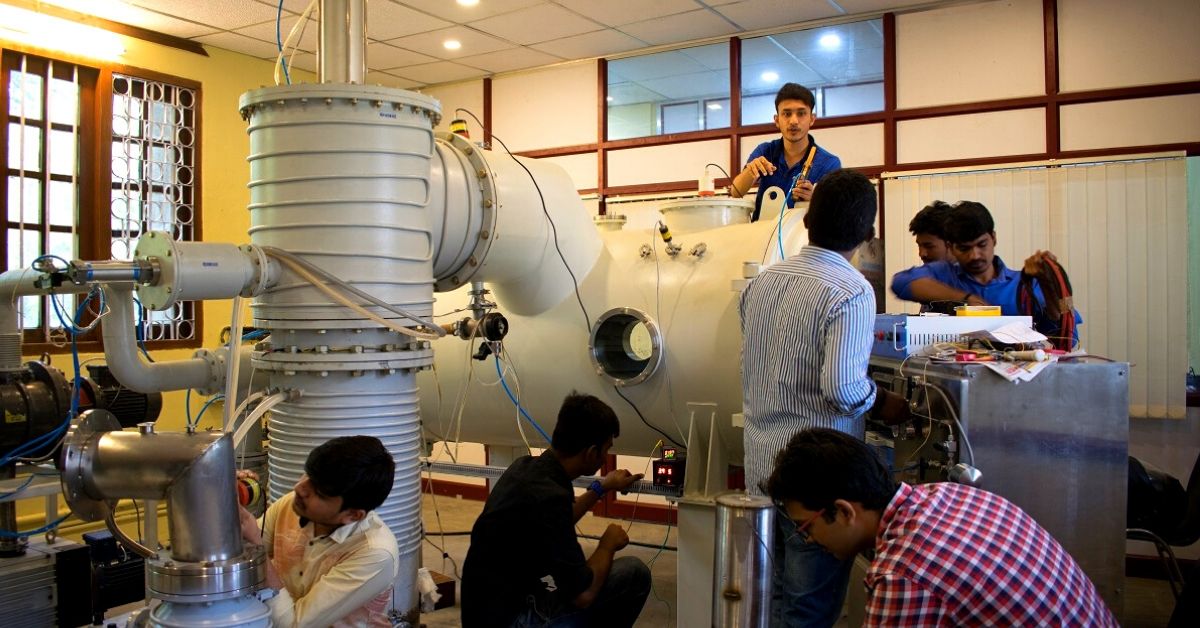- Joined
- Apr 29, 2015
- Messages
- 18,416
- Likes
- 56,946
 www.isro.gov.in
www.isro.gov.in

Electronic thruster ?Old EOI from 2017
View attachment 81518
Once India masters ion propulsion tech, all of future Indian satellites will based on ion and plasma thrusters instead of mini liquid-fueled rockets on satellites.
Do u have any idea which type of plasma thruster is used.Old EOI from 2017
View attachment 81518
Once India masters ion propulsion tech, all of future Indian satellites will based on ion and plasma thrusters instead of mini liquid-fueled rockets on satellites.
MUMBAI: Indian Space Research Organisation (Isro) is exploring the possibility of developing a new propulsion technology to fuel spacecraft for its future deep space missions.
On January 28, Isro’s UR Rao Satellite Centre in Bengaluru issued an invitation for ‘expression of interest’ for “design and modelling; simulation and analysis; testing and qualification of 100W Radioisotope Thermoelectric Generator (RTEG) without radio isotope.’’ Isro calls it alpha source thermoelectric propulsion technology.
RTEG will have less mass than solar cells of equivalent power and allow more compact spacecraft that can navigate easier in space. Many missions of Nasa and Russia, Besides China’s 2013 Chang’e 3 mission to the moon and its rover Yutu had used RTG.
Former Isro chairman AS Kiran Kumar said RTEG is futuristic. “It will be useful for long duration missions where alternative energy is not available,” he said. After another Mars mission, Isro could be eyeing Jupiter, Saturn, Neptune and Uranus.
According to the Isro document, “the development of RTEG is taken up as it is envisaged that it will be a part of Isro’s deep space missions for power generation and thermal management.”
According to the document, the system should be capable of operating in vaccum conditions of deep space, dusty, carbon dioxide-rich and corrosive environments. Isro says the RTG’s weight should be 20 kgs or less, with a life span of 20 years or more and survive indefinitely without damage when stored in the atmosphere at temperatures as high as 50 degrees Celsius.
Emphasising on safety standards, the document says, “It should be safe for human handling in close vicinity under all conditions even with nuclear fuel concealed inside … the unit should be resilient to any pre-launch or post-launch explosion so as to not cause any nuclear contamination in the environment.
*Electric thrusters, ion and plasma are two of its typesElectronic thruster ?
Don't know, I do not have access to or found any detailed report so far.Do u have any idea which type of plasma thruster is used.

ISRO already has its own plasma thrusters on GSAT-9, those being developed by private sector may be of different type or being reinvented.I think that ion thruster is currently used plasma based thruster is under development.
Meanwhile isro was going to test plasma thruster developed by start up.

This B'luru Startup Helps ISRO Set up Satellites in a Cheap, Eco-friendly Manner
India has come a long way from Aryabhatta, the first in the long line of satellites that the country has launched into space. Since then, our nation haswww.google.com
I think new type of plasma thruster is also under development.ISRO already has its own plasma thrusters on GSAT-9, those being developed by private sector may be of different type or being reinvented.
May be. Except GSAT-20 (to be launched) and GSAT-4 (rocket failed), other 2 satellites are already in orbit.I think new type of plasma thruster is also under development.
View attachment 81553
Handover Ceremony of Liner Material for Plasma Thruster for TDS-01 Satellite of ISRO
Second source is this press release from CSIR-CEERI, Pilani about virtual 'hand over' event held on 27 Dec 2021 for Thermionic Emitters cathode they developed for VSSC-ISRO to be used on electric propulsion thrusters.IPR has completed work under an MoU with Vikram Sarabhai Space Centre (VSSC) on "Plasma Erosion Characterization of Anode Liner Material". This study was initiated by VSSC to qualify indigenously-developed BN/SiO2 anode liner material for erosion studies used in Stationary Plasma Thrusters (SPT). For this purpose, IPR developed a low energy ion beam facility equipped with in-situ erosion measurement to test the ceramic material that was developed by VSSC, under thruster operating conditions. Based on a large number of erosion experiments performed by the IPR, feedback was given to VSSC to improve the material properties. The studies carried out at IPR showed 20% less erosion compared with the imported anode liner material, while maintaining all other required properties. Finally, the indigenously developed anode liner material for a 300 mN Stationary Plasma Thruster (SPT) cleared all quality tests and is approved for use in the upcoming TDS-01 mission in PSLV C54. A technology handover ceremony was arranged on 27 Dec, 2021 by VSSC, in the presence of Director VSSC, Director LPSC, Director CEERI and Dean (Admin) IPR. This work was carried out by a team consisting of Mr. Sooraj K. P., Dr. Basanta Parida and Dr. Mukesh Ranjan of FCIPT.
India’s space agency, ISRO, is jointly developing a nuclear-powered engine along with Bhabha Atomic Research Center (BARC), it is reliably learnt.
Chemical engines, such as those that power the thrusters in satellites, are fine up to a point, but if you want to send a spacecraft deep into space, such as into inter-planetary missions, they will not do—neither can they carry that much fuel nor can they be solar powered because sunlight will not reach a solar panel at such long distances.
Hence, nuclear-powered engines.
According to sources, ISRO-BARC are developing what are called Radio thermoelectric generators (RTGs). “The work has already begun and has been identified as a major task that has to be completed soon,” the source said.
The nuclear engines are not to be thought of as nuclear fission reactors that generate electricity. The RTGs use radioactive materials, such as Plutonium-238 or Strontium-90, which release heat as they decay.
Essentially, the engine contains two parts—the radioisotope heater unit (RHU) which generates heat, and the RTG, which converts the heat into electricity.
This heat is transferred to a ‘thermocouple’--a material that develops a voltage if there is a heat gradient across it. To put it in simple terms, think of it as a rod—if one end is hot and the other end is not, there will be a voltage across the rod (‘Seeback Effect’). The voltage can be harnessed to charge batteries that can provide motive force to a satellite. ISRO is targeting a 5W RTG, it is learnt.
“RTGs are independent of solar proximity and planetary alignment. This characteristic would help in minimising constraints like the ‘launch windows’ that the scientists have to operate within,” says Nitansha Bansal, a cyber security specialist with the Columbia University, in an article for the Observer Research Foundation (ORF).
RTGs, however, are not entirely new. US spacecrafts such as the Voyager, Cassini and Curiosity have been powered by RTGs.
